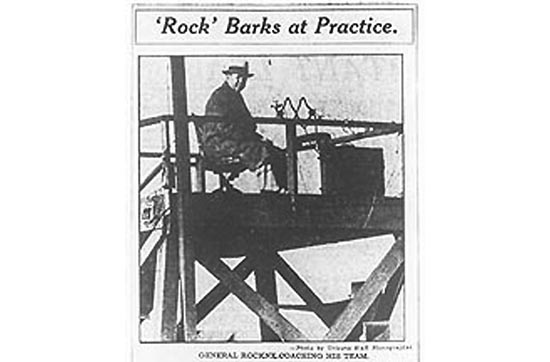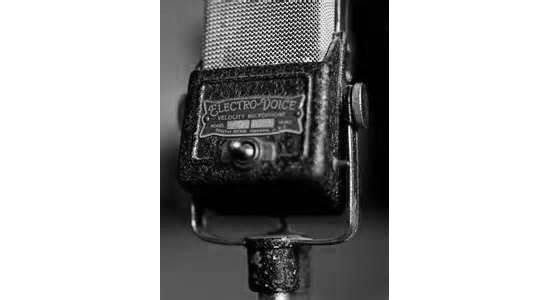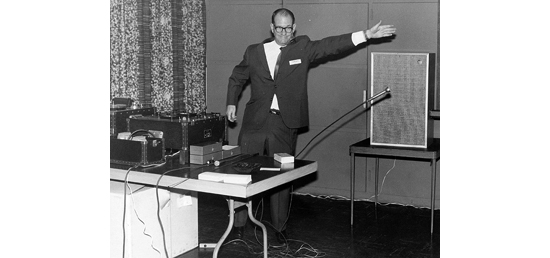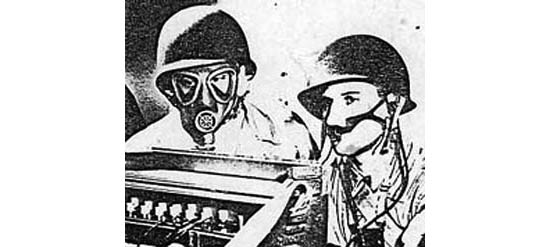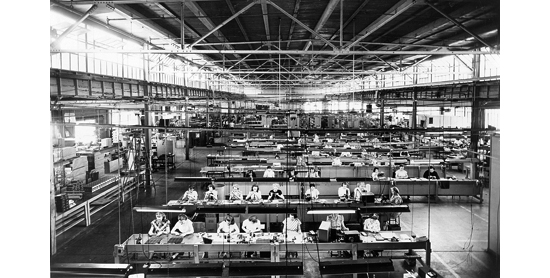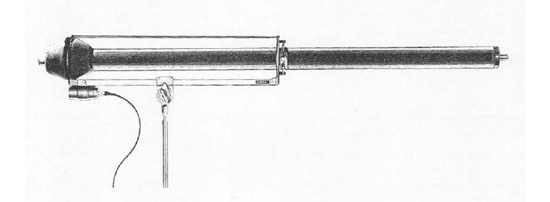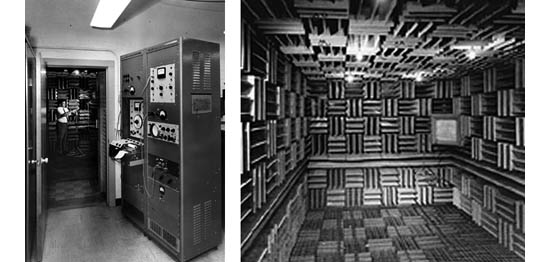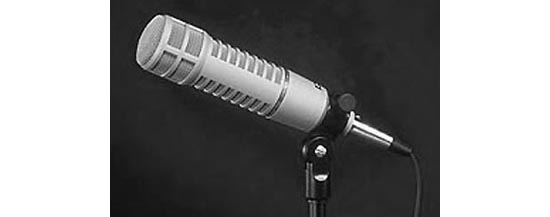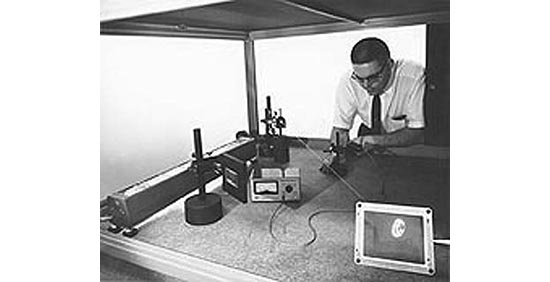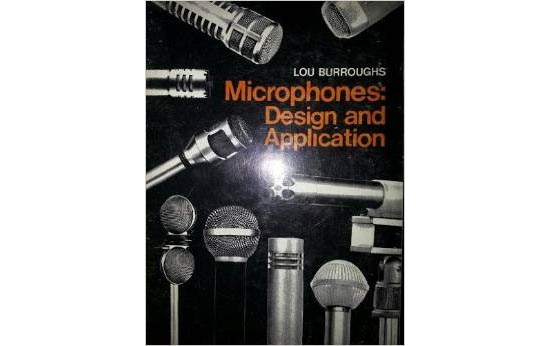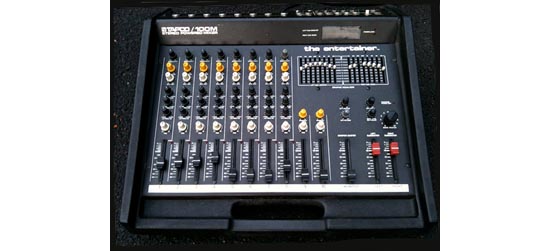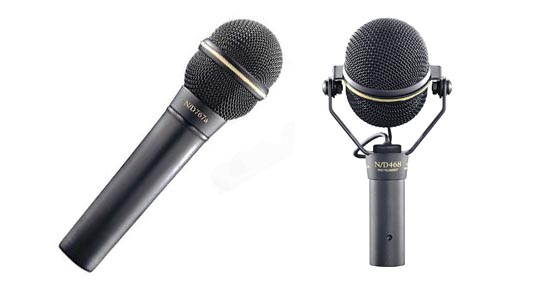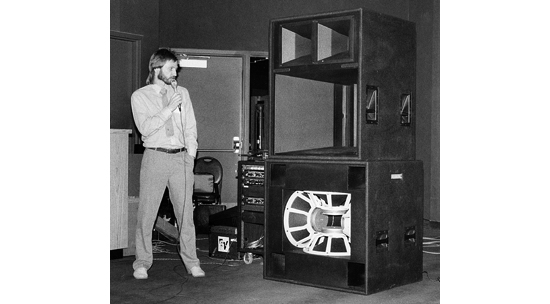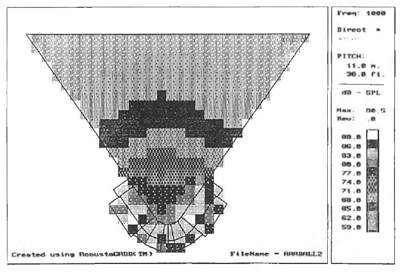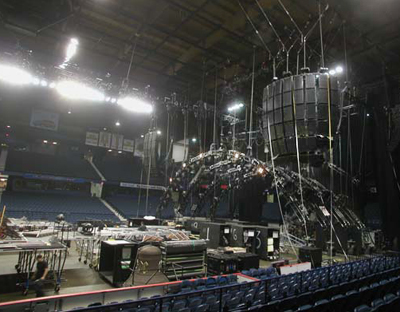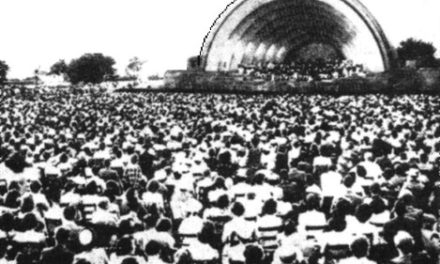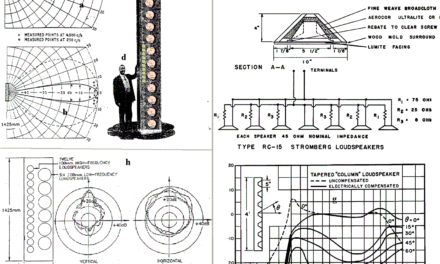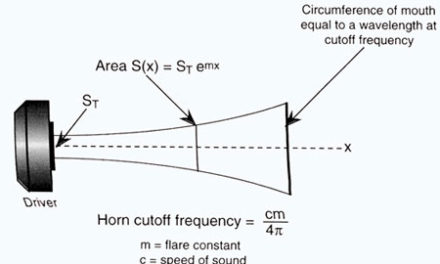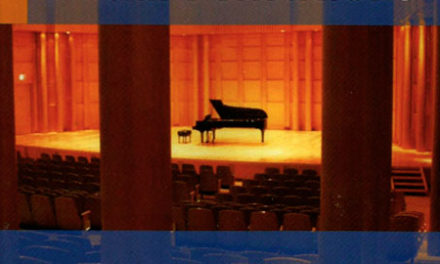By Keith Clark
Editor’s note: This article was written in 2005.
In 1927, Al Kahn and Lou Burroughs established the company Radio Engineers in the basement of the Century Tire and Rubber Company in South Bend, Indiana. At this site they first began producing microphones to use in their PA systems, and later to sell to people who couldn’t but them any other way.
Kahn: “Lou Burroughs and I began an association that has been devoted to problem-solving, filled with excitement and a great deal of fun.”
During the early months of 1930, Knute Rockne, the legendary football coach of the University of Notre Dame, was recovering from an illness that made it difficult for him to supervise activities on the four practice fields just south of the university. Kahn and Burroughs were asked to design a public address system to solve the problem.
A tower was built overlooking all four fields and the talented duo designed a four-loudspeaker system with a microphone and switching mechanism by which Rockne could bark training orders to each of the four squads.
By some accounts, Rockne referred to the system as his “electric voice,” and is credited with inspiring the name for the new company.
Incorporated on July 1, 1930, Electro-Voice was involved heavily in installation and rental of public address systems for churches and other public buildings. Politicians especially had become aware of the power of the microphone to increase their reach, and demanded ever more powerful PA systems.
Microphones were originally manufactured only for EV’s own use, but within a few years the balance had shifted and manufacturing microphones for sale to others had become the more important part of the business.
Kahn: “The Great Depression was a wonderful time. You had to fight for everything you got. I can’t think of a better time to have begun a company, because if you established the base during those years, you had a good start when the recovery came.”
In 1934, EV made a technological breakthrough that gave them a tremendous edge. While going through some old technical journals, Kahn had stumbled upon what he calls “an ancient watt meter – patented in 1892 or thereabouts” which had a balanced winding to cancel hum from the stray 60 Hz fields that the watt meter might pick up.
As he described it, “A little light bulb went off above my head, and I rushed back… got some tin snips, cut some laminations out, and I made a transformer and put it in and it worked!”
Thus, the humbucking coil was born, and solved a major problem for microphone users. According to an early EV catalog, the V-1 velocity microphone “can be used within 18 inches of a power supply or within two inches of an AC line. No other velocity mic in its price field has this feature at the present time.” It was a major step forward for the industry, and for EV.
Burroughs and Kahn continued their efforts to improve both the product and the manufacturing techniques and in 1935 they developed a method for stretching dynamic mic diaphragms before assembly.
The manufacturing economies that resulted caused a dramatic drop in mic prices, providing another competitive advantage for EV. The company had shown that it was, indeed, in the business of manufacturing first-quality microphones.
By 1938, Kahn’s company had produced several hand-held dynamic mic designs. The Model 600 was described in EV product literature as offering “Blast-proof high fidelity, close talking… ideal for sports announcing, mobile PA, aircraft, police and general PA and communication work.”
Business grew steadily while Kahn and Burroughs spent much of their time traveling – “converting people to our marvelous microphones throughout the country.” This growing success continued through the years of World War II, a time during which the company made a vast number of advancements in microphone and transducer design.
After WWII and the subsequent the successes the company’s products allowed U.S. military forces, Kahn and Burroughs’ company only continued to grow.
Now, in 2005, the fledgling enterprise that began in the basement of the Century Tire and Rubber Company is a fully realized leader in pro audio equipment design and manufacturing.
Electro-Voice Timeline: 1927 – 2001
1927: Al Kahn and Lou Burroughs found Radio Engineers in the basement of the Century Tire & Rubber Company, South Bend, Indiana. Company focus is radio retail, service and repair. Within a year, it is the largest radio service shop in the city.
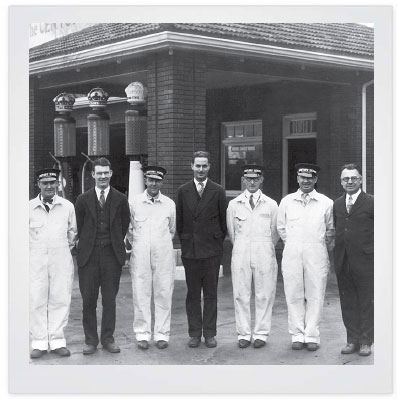
Lou Burroughs (second from left) and Al Kahn (center) with the crew of Century Tire & Rubber in 1927.
1929: Suffering greatly from the economic depression that began with the stock market crash in October, 1929, attention turned to the business of providing audio systems.
1930: The company develops a portable public address system for legendary Notre Dame football coach Knute Rockne, allowing him to communicate with four practice fields from a tower. He dubs this system his “Electric Voice” which was adapted as the company’s new name: Electro-Voice. Also around this time, Burroughs leaves the company.
1930: Overcoming the biggest obstacle in the portable PA system business – acquiring quality microphones – Electro-Voice sets up a microphone manufacturing operation, turning out units at the rate of one per week.
1934: Kahn develops the first microphone humbucking coil. This innovation helped nullify stray electromagnetic (AC) interference. Kahn unearthed a watt meter design from the 1890s and adapted the concept to cancel hum in mics created by stray 60 Hz fields. The coil was first included in the EV V-1 velocity microphone.
1935: Kahn develops a method of stretching dynamic mic diaphragms before assembly, resulting in a manufacturing economy that caused a dramatic drop in price.
1936: EV now employs 20 people, and Burroughs returns as chief engineer.
1938: The company offers several handheld dynamic microphone models. Kahn and Burroughs travel extensively to promote EV microphones as well as to collect market research for future designs. Burroughs continued his extensive travel through the remainder of his career, with his trips dubbed “Dr. Burroughs Medicine Show.”
1942: At the outset of World War II, radio communications in combat situations had an estimated success rate of 20 percent. Microphones picked up more battle noise than human voice. EV designed a mic using a 180-degree phase shift to cancel background noise and engineered it to be attached to the helmet and rest on the lips. Dubbed the T-45, this mic raised the success rate to at least 90 percent.
1942-45: Noise-cancelling mic production required by the military increases production at EV. Number of employees soars to 500, daily production peaks at 2,500, with total production close to 1 million.
1945: Burroughs receives a special citation from the U.S. war department for the T-45 microphone. Kahn is told by a Marine Corps officer that the historic landing at Guadalcanal was held up several weeks until troops could be equipped with the mic in order to reduce casualties.
1946: EV transfers operation to facilities in Buchanan, Michigan, later expanded several times. The company remained at the facility for almost 60 years.
1946: Burroughs develops Acoustalloy, a synthetic plastic applied to the aluminum diaphragms used in dynamic mics at the time, resulting in improved sound quality. Rather than disclose the nature of Acoustalloy in a patent, the synthetic formula was retained as a trade secret.
1946: EV establishes one of the first anechoic chambers outside of a research laboratory at the Buchanan facility.
1948: Photograph cartridges are added to the product line.
Late 1940s: Kahn is directly involved with the beginnings of Heathkit in Benton Harbor, Michigan, donating a train car of surplus electronic parts that become the foundation of the O1 oscilloscope, Heathkit’s first electronic project.
1950: EV begins manufacture of home hi-fi loudspeakers, quickly becoming one of the largest suppliers in the U.S.
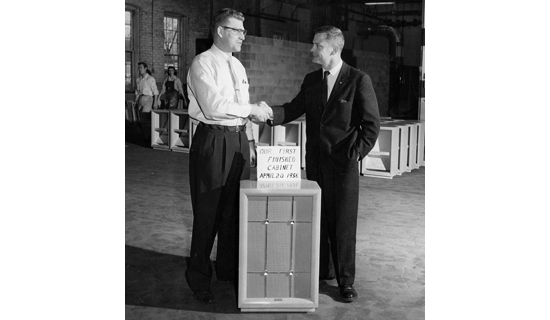
Congratulations are in order for the first model of a new hi-fi loudspeaker coming off the EV assembly line, circa 1956.
1953: Introduction of Variable-D microphone technology, which reduces proximity effect.
1959: A 30-inch woofer, the model 30W, is introduced by EV, used in the Patrician Series of home hi-fi speakers.
Late 1950s – 1970s: EV microphones are a staple of space flight, beginning with early Mercury and Gemini missions through Skylab space station. Both mics and speakers served Skylab during its six-year orbit, performing without failure despite a lost heat shield.
Early 1960s: The EV 643 “monster mic” is introduced. Six feet long, it is highly successful in picking up distant sounds and becomes a standard at presidential press conferences, political conventions and athletic events where conventional mics can’t handle the distance problem.
1963: EV receives an Academy Awards “Oscar” for the development of the model 642 Cardiline, another long-range mic. The award, in part, read “To Electro-Voice for a highly directional dynamic line microphone… capable of picking up sound in situations where a microphone cannot be placed close to the sound source and where unwanted sounds are to be discriminated against.”
1965: Electro-Voice builds and opens two new production plants Tennessee, one in Sevierville and the other in Newport.
1966: A new anechoic chamber, one of the largest in the U.S., is built at the Buchanan facility.
1967: With gross annual sales approaching $20 million, EV is acquired by Gulton Industries.
1968: The RE20 microphone is introduced, quickly becoming a standard in studio and broadcast applications, and later, it is utilized in sound reinforcement for low-frequency applications such as kick drum, where its Variable D technology rejects excessive bass boost.
1968: After retiring from Electro-Voice, Kahn establishes Ten-Tec, a manufacturer of ham radio equipment, in a new building erected across the street from EV’s Sevierville plant.
Early 1970s: EV pioneers the use of holographic interferometry (laser technology) to study the motion of mic diaphragms. Initial efforts in this regard are done with the University of Michigan, with EV later bringing the laser testing process in-house.
1972: The company is the first to include Thiele-Small parameters on woofer specification sheets, for user determination of enclosure characteristics and frequency response.
1973: EV develops “constant directivity” (CD) horn technology for dramatically improved high-frequency performance and control. Also, EV is the first to publish full sets of third-octave polar responses for horns.
1974: EV introduces the 100S Entertainer, a molded plastic portable loudspeaker system that proves immensely popular.
1974: Lou Burroughs’ textbook, “Microphones: Design and Application” is published, and still serves as a valuable reference source to this day.
Late 1970s: EV/Gulton acquire TAPCO, a company founded by Greg Mackie and specializing in the development of innovative pro audio electronic products, mixers in particular. TAPCO products become a mainstay of the EV line, both individually and within packaged portable PA systems such as the Entertainer.
1980: The company’s patent count surpasses 160.
1985: EastVAMP, a high-accuracy graphic technique for determining loudspeaker coverage, is made available to customers.
1986: EV introduces a neodymium-based (N/DYM) magnet structure in microphone design, resulting in extended frequency response and increased power output. The concept is quickly duplicated by other manufacturers and later finds its way into compression drivers.
1986: Mark IV Industries acquires Gulton Industries, which now includes EV, Altec Lansing, University Sound, Cetec Vega and other leading manufacturers. These companies are formed into the Mark IV Audio Group.
1987: EV introduces Manifold Technology – the use of multiple drivers on single horns – found in the company’s MT-4 concert loudspeakers. The innovation helps the company enter the concert touring market.
1988: EV opens a new 28,000-square-foot research and development facility located in downtown Buchanan. The facilities accommodates CAD, holography, laser-based analysis, Fast Fourier testing (FFT), time-energy-frequency testing and more.
1990: Electronically controlled DeltaMax loudspeaker systems introduced.
1990: EV and Altec Lansing jointly release AcoustaCADD room modeling software, a popular system design tool until overtaken by competitive versions.
1992: MH Series horns are introduced, incorporating both constant directivity and Manifold Technology.
1997: Mark IV Audio, which now includes leading manufacturers such as Klark Teknik, DDA and Midas in addition to EV, is purchased by Greenwich Street Capital Partners, a New York investment fund.
1997: The X-Array concert loudspeaker series is introduced, outfitted with new Ring Mode Decoupling (RMD) technology. The series makes its debut on the Rolling Stones “Bridges To Babylon” stadium tour. RMD becomes a staple of EV high-end loudspeakers for live and installed applications.
1999-2001: EV is merged with Telex Communications, another Greenwich Partners company. R&D, finance, accounting, sales and marketing operations are transferred to Telex headquarters in Burnsville, Minnesota. Manufacturing continues in Buchanan, with a staff of approximately 170 people.
2006: EV and Telex are acquired by Robert Bosch GmbH (Bosch), and remain headquartered at the Burnsville facility. The EV manufacturing facility in Buchanan closes.
Present (2015): EV continues to serve the live sound and fixed installation markets with a product line of loudspeakers, microphones and electronics. A focus on portable loudspeakers has led to a leadership position in that market, while the next generation X-Line Advance family of line array loudspeakers have been unveiled.
Related articles:
The State Of EV In 1953, By Founder Al Kahn
Interview: Jim Long On 40-Plus Years With EV

